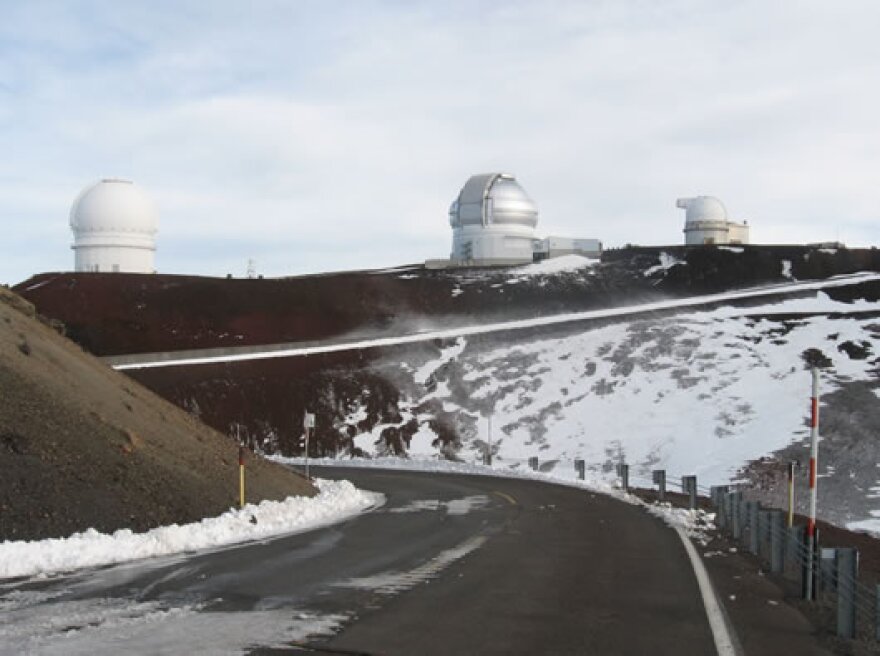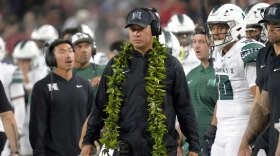The University of Hawai?i Board of Regents today is considering a proposal to review possible new management options for Mauna Kea in the wake of a three-month protest against the planned Thirty Meter Telescope. Some working models could broaden the role of native Hawaiians in directing the mountain's future.
Let’s start with Kaho?olawe, a model with a history similar to Mauna Kea's and the activism around it. After more than 50 years of U.S. military bombing and decades of protests by the advocacy group Protect Kaho’olawe ‘Ohana, the island was returned to the state in 1994 and a management body was created.
"There’s so much autonomy that was given to one commission, I don’t know if people are willing to give that much autonomy to a single commission again," said Michael Naho?opi?i, executive director of the Kaho?olawe Island Reserve Commission.
He said much of the board’s success in restoring the island’s biological and cultural landscape comes from not having to ask other agencies for permission before taking action. All stakeholders have a seat on the commission, including the Protect Kaho’olawe ‘Ohana.
"We’re a temporary caretaker until such time that there is a sovereign, native Hawaiian entity that has been recognized by the state and also by the federal government. So we’re holding the land in trust until that time," he said.
Other management models have dual missions like the Papah?naumokuakea National Marine Monument. It’s one of the world’s largest protected areas for fish and wildlife, and also a place where native Hawaiians believe life originates and spirits return after death.
The monument is co-managed by several government agencies and native Hawaiian organizations.
"One of our motto’s is where culture and nature are one," said Athline Clark, monument superintendent with the National Oceanic and Atmospheric Administration. She said part of managing the monument involves gatekeeping; entry to the marine sanctuary is reviewed by two separate but equal groups.
"So all of the science applications still get reviewed by practitioners in the native Hawaiian community. All the native Hawaiian applications also get reviewed for their biological impact or significance," said Clark.
Then there are community-based models, like Hawai?i’s first Community-Based Subsistence Fishing Area in H??ena, Kaua?i, that started four years ago. Community members manage the fishery that extends one mile off shore.
"This is when communities are given some empowerment to create the rules for their place and play a role in the management of that place in partnership with the government," said Kevin Change, executive director of Kua’?ina ?Ulu ?Auamo, the organization that helped H?’ena develop its fishing resource.
While there's no lack of models in considering new structures of management for the Mauna Kea, the process of change is likely to take time.
First, there’s a fundamental question to ask, says Greg Chun, executive director of Mauna Kea stewardship for the University of Hawaii.
"Is Mauna Kea a science reserve that happens to be a culturally significant landscape? Or is it a culturally significant landscape that just happens to be the premier place for astronomy in the world? Once you start reframing where your starting point is, then you have an opportunity to make different decisions," he said.
That’s an issue UH regents will be grappling with throughout the day as they hear testimony in Hilo on how to best manage Mauna Kea.




